Early depletion of gut microbiota shape oligodendrocyte response after traumatic brain injury
- PMID: 39010082
- PMCID: PMC11251111
- DOI: 10.1186/s12974-024-03158-9
Early depletion of gut microbiota shape oligodendrocyte response after traumatic brain injury
Abstract
White matter injury (WMI) is thought to be a major contributor to long-term cognitive dysfunctions after traumatic brain injury (TBI). This damage occurs partly due to apoptotic death of oligodendrocyte lineage cells (OLCs) after the injury, triggered directly by the trauma or in response to degenerating axons. Recent research suggests that the gut microbiota modulates the inflammatory response through the regulation of peripheral immune cell infiltration after TBI. Additionally, T-cells directly impact OLCs differentiation and proliferation. Therefore, we hypothesized that the gut microbiota plays a critical role in regulating the OLC response to WMI influencing T-cells differentiation and activation. Gut microbial depletion early after TBI chronically reduced re-myelination, acutely decreased OLCs proliferation, and was associated with increased myelin debris accumulation. Surprisingly, the absence of T-cells in gut microbiota depleted mice restored OLC proliferation and remyelination after TBI. OLCs co-cultured with T-cells derived from gut microbiota depleted mice resulted in impaired proliferation and increased expression of MHC-II compared with T cells from control-injured mice. Furthermore, MHC-II expression in OLCs appears to be linked to impaired proliferation under gut microbiota depletion and TBI conditions. Collectively our data indicates that depletion of the gut microbiota after TBI impaired remyelination, reduced OLCs proliferation with concomitantly increased OLC MHCII expression, and required the presence of T cells. This data suggests that T cells are an important mechanistic link by which the gut microbiota modulate the oligodendrocyte response and white matter recovery after TBI.
Keywords: Gut microbiota; Neuroinflammation; Oligodendrocytes; Remyelination; T cells; Traumatic brain injury; White matter injury.
© 2024. The Author(s).
Conflict of interest statement
The authors declare no competing interests.
Figures

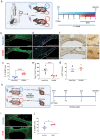
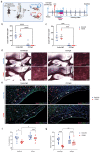
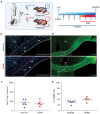
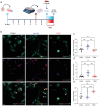

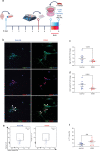
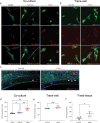
Update of
-
Gut Microbiota Shape Oligodendrocyte Response after Traumatic Brain Injury.Res Sq [Preprint]. 2024 Apr 24:rs.3.rs-4289147. doi: 10.21203/rs.3.rs-4289147/v1. Res Sq. 2024. Update in: J Neuroinflammation. 2024 Jul 15;21(1):171. doi: 10.1186/s12974-024-03158-9. PMID: 38746334 Free PMC article. Updated. Preprint.
References
MeSH terms
Grants and funding
LinkOut - more resources
Full Text Sources
Medical
Molecular Biology Databases
Research Materials

